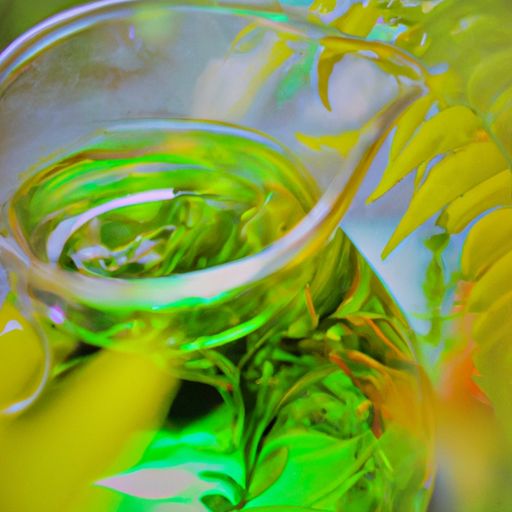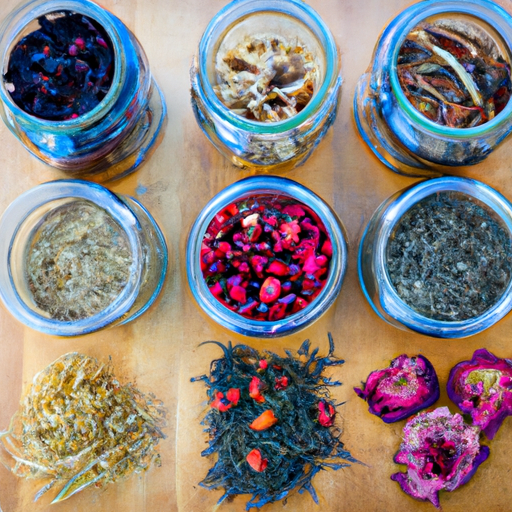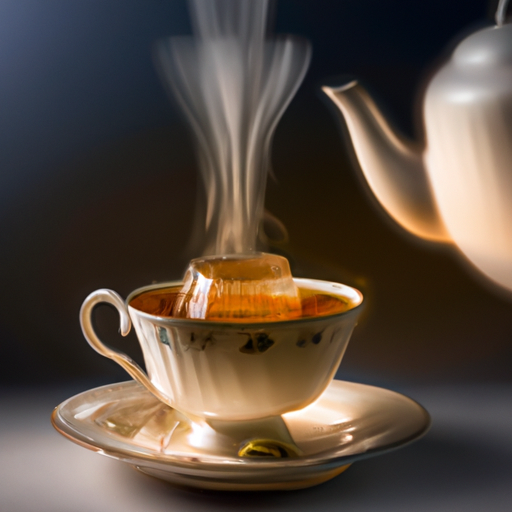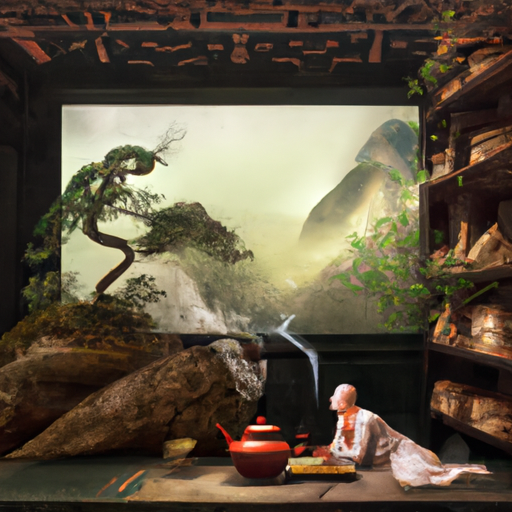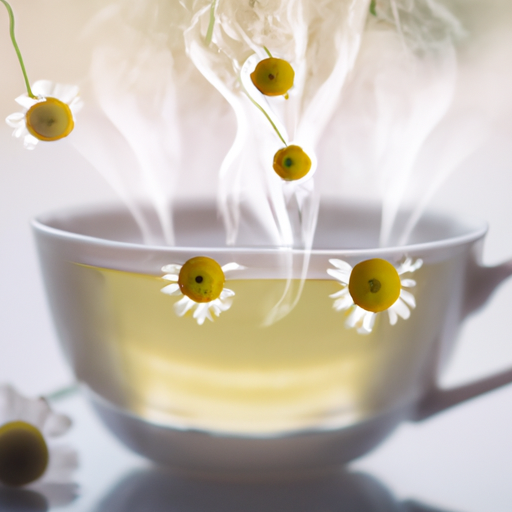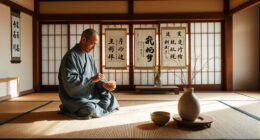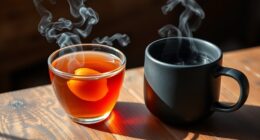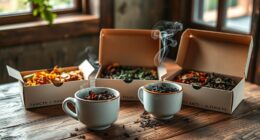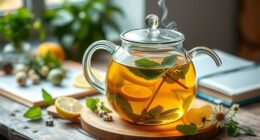Did you know that gunpowder green tea has a higher antioxidant capacity compared to other green teas?
With its unique leaf shape and flavor, gunpowder green tea has become a versatile and popular choice among tea enthusiasts worldwide.
Originating in China, this tea is now produced in various provinces and countries, each with its own distinct characteristics.
The tightly rolled pellets, resembling gunpowder, are made from the camellia sinensis plant and can be enjoyed in different ways, from traditional hot brewing to cold-brewing and blending with fresh ingredients.
But it’s not just about the taste and versatility – gunpowder green tea also offers numerous health benefits.
It is known for its antiviral, antibacterial, and anticancer properties, and may even help lower cholesterol and blood sugar levels.
So, whether you’re looking for a refreshing iced tea or a soothing hot cup, the charm of gunpowder green tea is sure to captivate your senses.
Key Takeaways
- Gunpowder tea is a versatile green tea that can be enjoyed in various ways, including with milk, blended, added to cocktails, or cold-brewed.
- Gunpowder tea is made from the camellia sinensis plant and has a unique leaf shape and flavor.
- It is one of the older types of green tea and originated in the Chinese province of Zhejiang.
- Gunpowder tea has various health benefits, including antiviral, antibacterial, and anticancer properties, as well as a higher antioxidant capacity compared to other green teas.
What is it?
I love Gunpowder Green Tea because of its versatility and unique flavor profile. The versatility of Gunpowder Green Tea is truly amazing. It can be enjoyed in various ways, allowing you to explore different flavors and experiences.
One of the most popular ways to enjoy Gunpowder Green Tea is by simply brewing it and savoring its rich and smoky taste. However, you can also get creative and add milk for a creamy twist, blend it with other ingredients for a unique flavor combination, or even use it as a base for refreshing cocktails.
Gunpowder Green Tea also holds cultural significance, particularly in Moroccan Mint tea. Its tightly rolled pellets resemble gunpowder, giving it a distinct appearance. The cultural traditions and rituals surrounding Gunpowder Green Tea make it even more special and enjoyable.
Origin and History
Originating in the picturesque Chinese province of Zhejiang, this ancient infusion dances through history, leaving a trail of intrigue and culture in its wake. Gunpowder green tea has deep cultural significance and has evolved in its production methods over time.
-
Gunpowder tea has been a staple in Chinese tea culture for over 1000 years, with its unique leaf shape and flavor enchanting tea enthusiasts.
-
The production methods of Gunpowder tea have evolved to enhance its quality and taste. From hand-rolling the leaves to using machines, these methods have adapted to meet the demands of tea lovers.
-
Gunpowder tea has also spread its wings beyond China, being produced in other provinces and countries, further enriching its cultural significance.
-
This tea has played a vital role in tea traditions worldwide, serving as the base for iconic beverages like Moroccan Mint tea.
The evolution of Gunpowder green tea production methods reflects the enduring charm and adaptability of this ancient infusion, making it a beloved and culturally significant beverage.
Flavor and Appearance
Its unique flavor and appearance make Gunpowder green tea a truly captivating beverage. The tightly rolled pellets resemble gunpowder, giving it a distinctive look that sets it apart from other teas.
When brewed, Gunpowder tea has a deep yellow color and a light smoky note, which adds to its charm.
Exploring different brewing methods can further enhance the flavor of Gunpowder tea. By steeping it for about 3 minutes at a temperature of around 176°F, you can bring out its rich and complex taste. Additionally, Gunpowder tea blends well with fresh ingredients like mint and lemongrass, allowing you to create a variety of creative and refreshing recipes.
From traditional Moroccan Mint tea to modern twists like Pink Milk tea, Gunpowder tea offers endless possibilities for experimentation. Its versatility makes it a great choice for both hot and iced tea, and it can be enjoyed on its own or with added flavors.
So go ahead and explore the versatility of Gunpowder green tea, and discover new ways to savor its captivating flavor.
Health Benefits
Gunpowder green tea has been found to have a wide range of health benefits, including antioxidant, antibacterial, and anticancer properties. Here are three key ways in which gunpowder green tea can benefit your health:
-
Antioxidant properties: Gunpowder green tea is rich in antioxidants, which help protect the body against free radicals and oxidative stress. These antioxidants, such as catechins, can help reduce the risk of chronic diseases like heart disease and cancer.
-
Brewing techniques: To fully enjoy the health benefits of gunpowder green tea, it’s important to pay attention to brewing techniques. Boiling fresh spring water and steeping the tea leaves at the right temperature (around 176°F) for about 3 minutes can help extract the maximum amount of beneficial compounds from the leaves.
-
Other potential health benefits: Aside from its antioxidant properties, gunpowder green tea may also have antimutagenic, anti-inflammatory, and cholesterol-lowering effects. It’s also been studied for its antiviral, antibacterial, and antifungal properties, showing potential in fighting against various pathogens.
Incorporating gunpowder green tea into your routine and following proper brewing techniques can help you enjoy its versatile charm while reaping its potential health benefits.
Frequently Asked Questions
How should Gunpowder green tea be stored to maintain its freshness and flavor?
To maintain the freshness and flavor of gunpowder green tea, store it in an airtight container away from light, heat, and moisture. Avoid exposure to strong odors. Choose high-quality tea by looking for tightly rolled pellets and a fresh, grassy aroma.
What are some popular ways to enjoy Gunpowder green tea besides brewing it as a hot beverage?
When it comes to gunpowder green tea, there are several creative culinary applications to explore. From adding it to desserts like ice cream or cakes, to using it as a flavor enhancer in savory dishes, the possibilities are endless. Additionally, exploring the cultural traditions and rituals surrounding gunpowder green tea consumption can provide a deeper appreciation for this versatile tea. From the Moroccan tradition of serving it with mint and sugar, to the Japanese tea ceremony, there are rich cultural practices to discover. So, besides brewing it as a hot beverage, why not get creative and dive into the fascinating world of gunpowder green tea?
Can Gunpowder green tea be brewed multiple times, or is it a one-time use tea?
Gunpowder green tea can be brewed multiple times, as it retains flavor even after the initial infusion. The caffeine content in gunpowder green tea varies, but it generally has a higher antioxidant capacity compared to other green teas. Drinking gunpowder green tea may have various health benefits, such as antimutagenic, anti-inflammatory, and cholesterol-lowering properties.
Are there any specific brewing techniques that should be followed for Gunpowder green tea to avoid bitterness?
To avoid bitterness, I recommend using fresh spring water and preheating the teaware. Steep the Gunpowder tea for about 3 minutes at 176°F. Its specific brewing techniques create a harmonious balance, preventing any bitterness. Additionally, pregnant women can benefit from its health properties.
Can Gunpowder green tea be consumed by pregnant women or individuals with certain medical conditions?
Gunpowder green tea can be consumed by pregnant women and individuals with certain medical conditions, but it’s important to consult a healthcare professional. It contains caffeine and can aid digestion and weight loss due to its natural properties.
Conclusion
In conclusion, the versatile charm of gunpowder green tea is truly captivating. Its tightly rolled pellets, resembling gunpowder, unfurl to reveal a vibrant and aromatic brew. With origins rooted in China, this tea has traversed borders and cultures, becoming a beloved staple in households worldwide.
Its unique flavor, reminiscent of Chun Mei or Zhen Mei tea, satisfies the palate and leaves a lasting impression. Beyond its exquisite taste, gunpowder green tea offers a multitude of health benefits, acting as a powerful ally in our quest for wellness.
So, indulge in this enchanting tea, and let its magic transport you to a world of tranquility and rejuvenation.

